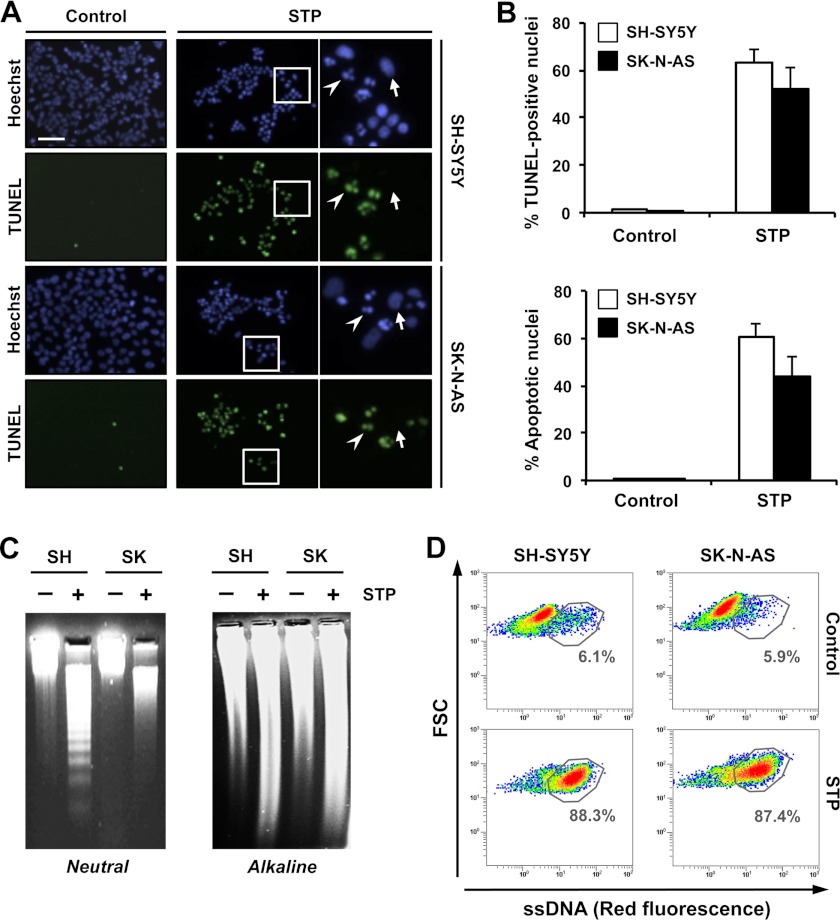FIGURE 4.
STP induces endonuclease activity in SK-N-AS cells that is evidenced by the generation of SSBs and free 3′-OH ends in the DNA. A, TUNEL reactivity and Hoechst nuclear staining in SH-SY5Y or SK-N-AS cells treated (STP) or not treated (Control) with 1 μm STP for 12 h. The right panels are magnifications of the insets in the center panels. The arrows show non-apoptotic nuclei that are negative for TUNEL reactivity. The arrowheads indicate apoptotic and TUNEL-positive nuclei. Scale bar = 40 μm. B, quantification of the data presented in A representing TUNEL-positive nuclei (upper panel) and apoptotic nuclei (lower panel) in SH-SY5Y (white bars) and SK-N-AS (black bars) cells upon STP treatment. The means ± S.E. of three independent experiments are shown. C, SH-SY5Y (SH) and SK-N-AS (SK) cells were left untreated (-) or treated (+) with 1 μm STP for 12 h. Genomic DNA was extracted and analyzed by neutral conventional (left panel) or alkaline (right panel) agarose gel electrophoresis and subsequent ethidium bromide staining (see “Experimental Procedures”). D, flow cytometry analysis of ssDNA damage using the monoclonal antibody F7-26 in SK-N-AS and SH-SY5Y cells left untreated (Control) or treated with 1 μm STP for 12 h and fixed immediately (see “Experimental Procedures”). Flow cytometry data are shown as density plots representing size (y axis, in a logarithm scale) versus intensity of red fluorescence (x axis, in a logarithm scale). FSC, forward scatter of light. Cell density (events) is shown on a pseudocolor scale from minimum density (blue) to maximum density (red). The circled populations correspond to cells presenting ssDNA damage. The percentage of gated cells in each condition is indicated. The experiment was repeated three times with a low variability (< 5%).

